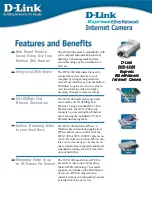
1-1
ENGLISH
JAPANESE
ENGLISH
JAPANESE
DSLR-A350_L2
1. SERVICE NOTE
1-1. CHEMICALS
Some chemicals used for servicing are highly volatile.
Their evaporation caused by improper management affects your health and environment, and wastes resources.
Manage the chemicals carefully as follows.
•
Store chemicals sealed in a specific place to prevent from exposure to high temperature or direct sunlight.
•
Avoid dividing chemicals into excessive numbers of small containers to reduce natural evaporation.
•
Keep containers sealed to avoid natural evaporation when chemicals are not in use.
•
Avoid using chemicals as much as possible. When using chemicals, divide only required amount to a small plate from the container and
use up it.
1-2. EXTERIOR PARTS
Be careful to the following points for plastic parts used in this unit.
•
Use a piece of cleaning paper or cleaning cloth for cleaning plastic parts. Avoid using chemicals.
Even if you have to use chemicals to clean heavy dirt, don’t use paint thinner, ketone, nor alcohol.
•
Insert the specific screws vertically to the part when installing a plastic part.
Be careful not to tighten screws too much.
1-3. UNLEADED SOLDER
This unit uses unleaded solder.
Boards requiring use of unleaded solder are printed with the lead free mark (LF) indicating the solder contains no lead.
(
Caution:
Some printed circuit boards may not come printed with the lead free mark due to their particular size.)
: LEAD FREE MARK
Be careful to the following points to solder or unsolder.
•
Set the soldering iron tip temperature to 350
°
C approximately.
If cannot control temperature, solder/unsolder at high temperature for a short time.
Caution:
The printed pattern (copper foil) may peel away if the heated tip is applied for too long, so be careful!
Unleaded solder is more viscous (sticky, less prone to flow) than ordinary solder so use caution not to let solder bridges occur
such as on IC pins, etc.
•
Be sure to control soldering iron tips used for unleaded solder and those for leaded solder so they are managed separately. Mixing
unleaded solder and leaded solder will cause detachment phenomenon.
1-4. SAFETY CHECK-OUT
After correcting the original service problem, perform the following safety checks before releasing the set to the customer.
1.
Check the area of your repair for unsoldered or poorly-soldered connections. Check the entire board surface for solder splashes and
bridges.
2.
Check the interboard wiring to ensure that no wires are “pinched” or contact high-wattage resistors.
3.
Look for unauthorized replacement parts, particularly transistors, that were installed during a previous repair. Point them out to the
customer and recommend their replacement.
4.
Look for parts which, through functioning, show obvious signs of deterioration. Point them out to the customer and recommend their
replacement.
5.
Check the B+ voltage to see it is at the values specified.
6.
Flexible Circuit Board Repairing
•
Keep the temperature of the soldering iron around 270
°
C during repairing.
•
Do not touch the soldering iron on the same conductor of the circuit board (within 3 times).
•
Be careful not to apply force on the conductor when soldering or unsoldering.
SAFETY-RELATED COMPONENT WARNING!!
COMPONENTS IDENTIFIED BY MARK
0
OR DOTTED LINE WITH
MARK
0
ON THE SCHEMATIC DIAGRAMS AND IN THE PARTS
LIST ARE CRITICAL TO SAFE OPERATION. REPLACE THESE
COMPONENTS WITH SONY PARTS WHOSE PART NUMBERS
APPEAR AS SHOWN IN THIS MANUAL OR IN SUPPLEMENTS
PUBLISHED BY SONY.
ATTENTION AU COMPOSANT AYANT RAPPORT
À LA SÉCURITÉ!
LES COMPOSANTS IDENTIFÉS PAR UNE MARQUE
0
SUR LES
DIAGRAMMES SCHÉMATIQUES ET LA LISTE DES PIÈCES SONT
CRITIQUES POUR LA SÉCURITÉ DE FONCTIONNEMENT. NE
REMPLACER CES COMPOSANTS QUE PAR DES PIÈSES SONY
DONT LES NUMÉROS SONT DONNÉS DANS CE MANUEL OU
DANS LES SUPPÉMENTS PUBLIÉS PAR SONY.
CAUTION
Danger of explosion if battery is incorrectly replaced.
Replace only with the same or equivalent type.




































